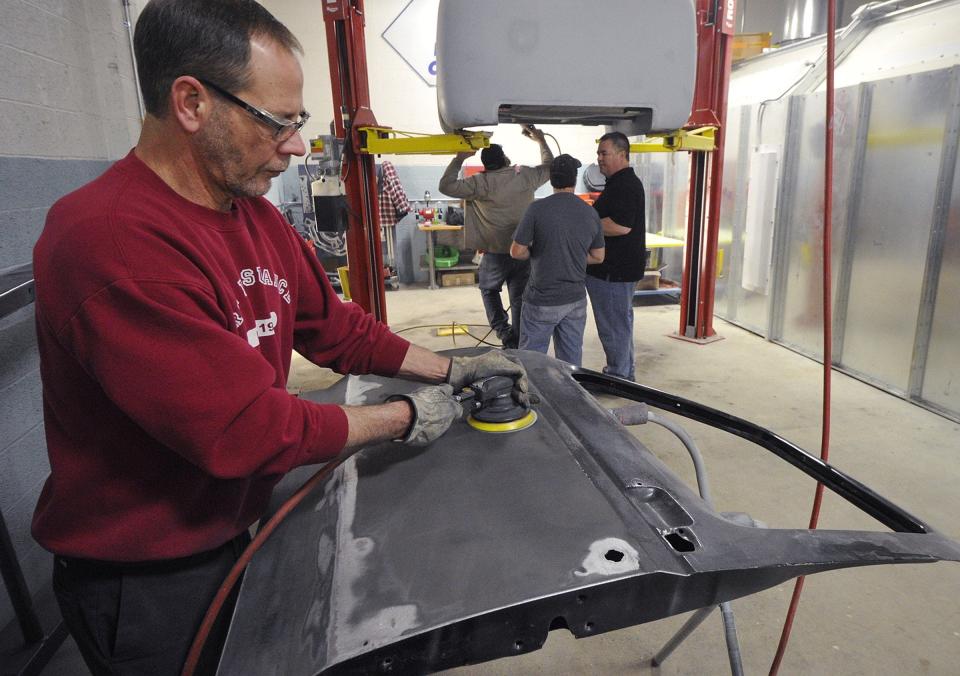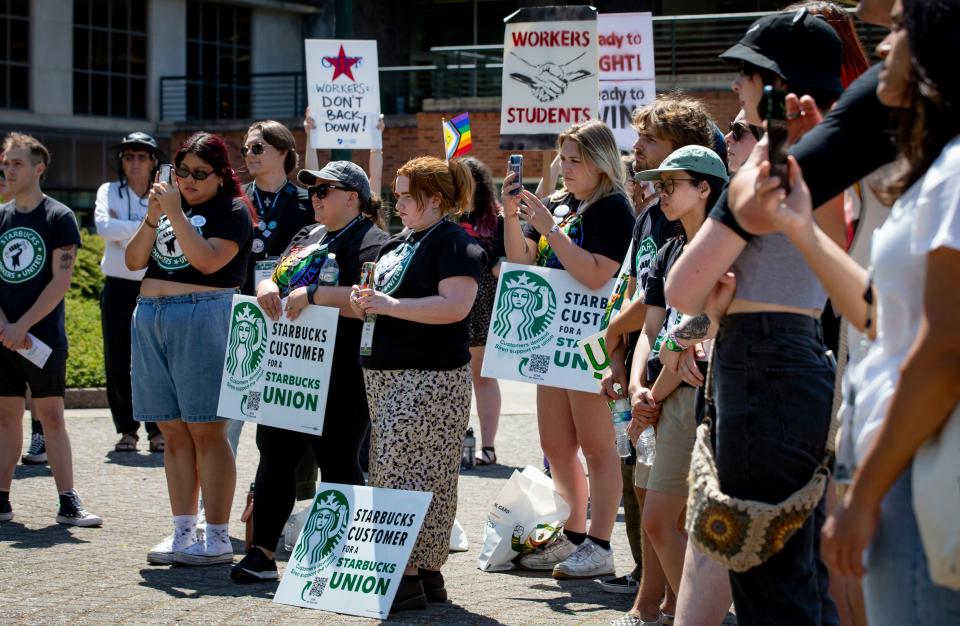Pennsylvania paychecks: How our earnings compare and what we can buy with the money
The U.S. Labor Department describes Labor Day as an annual celebration of the social and economic achievements of American workers.
One way to measure those achievements is the amount that we get paid.
And by that standard, workers of all sorts in Pennsylvania fall short of the national average of $59,428.

But not short by much.
At $58,470, Pennsylvania pay ranks 20th in the nation, according to a list compiled by ForbesAdvisor that uses numbers provided by the U.S. Bureau of Labor Statistics.
That's 23.6% less than the average wage in top-earning Massachusetts. But Pennsylvania residents also earn 29.7% more than their counterparts in Mississippi, the state with the lowest paychecks at $45,180.
The Keystone State fares a bit better than our neighbors in Ohio, where the average annual wage is $56,530, according to reports by the U.S. Bureau of Labor Statistics.
Wage earners in nearby Maryland bring home far larger paychecks with average annual earnings of $69,750. Residents of West Virginia earn an average of $49,170.
Why wage differences exist
Some analysts, including pro-union groups, argue that wages tend to be lower in so-called right-to-work states that do not require employees to join a union when one exists.
The National Bureau of Economic Research reports that wages are on average 7.5% lower in the 28 states that have right-to-work laws that allow employees to receive union benefits and wages without paying dues.
The 10 lowest-paying states are all right-to-work states, according to the U.S. Bureau of Labor Statistics.
A counterpoint, however, is that the legislation, encouraged by the Taft-Hartley Act of 1947, is often perceived as making a state more business-friendly.
In May, Michigan became one of the first states to repeal such legislation.
There's little to suggest that Pennsylvania would reverse course and join the ranks of right-to-work states — at least not anytime soon.
Democratic Gov. Josh Shapiro campaigned heavily on his support of unions and in a recent social media post said: "As long as I’m governor, I’ll continue to have the backs of Pennsylvania’s workers. We will never be a right to work state."

The law of supply and demand
Ken Louie, a professor of economics at Penn State Behrend and director of Behrend's Economic Research Institute of Erie, thinks state laws regarding unionization are only one issue that shapes pay rates.
"I think the bigger factor is more fundamental. It's supply and demand," he said. "Unfortunately, many places in the South, (job) demand is such that equilibrium wage tends to be lower. I think the laws of supply and demand are more important than right-to-work."
Comparing cost of living
Wages are only one factor that determine the goods and services our employment allows us to buy.
Consider that while Mississippi has the lowest average earnings in the nation, it also has the lowest cost of living, according to the Missouri Economic Research and Information Center, which calculates cost of living based on costs for housing, utilities, groceries and other costs.
Oklahoma, Kansas, Missouri and Alabama round out the top five lowest cost-of-living states.
At the other end of the scale, Hawaii ranked as the state with the highest cost of living, followed by Washington, D.C., Massachusetts, California and New York.
Meanwhile, Pennsylvania's cost-of-living score is near the middle at 28th lowest.
Cost-of-living scores are expressed as a composite number with the U.S. average being listed as a median with a score of 100.
Pennsylvania's score was 99.0, meaning that the state's cost of living was just slightly below the national average. Composite scores range from a low of 85.3 in Mississippi to a high of 179 for Hawaii.
A look at what Pennsylvanians earn
In what some have called the Summer of Strikes, locomotive builders in Erie, screenwriters and UPS drivers and Starbucks employees across the country have all walked the picket line, prompting the public to give fresh consideration to the paychecks many of us take home.
Here, from the Pennsylvania Department of Labor & Industry, is a look at the average paychecks for a range of occupations in Pennsylvania.
Human resources manager: $130,190
Construction manager: $118,940
Tax preparer: $55,600
Actuary: $122,910
Electrical engineer: $105,120
Rehabilitation counselor: $41,930
Lawyer: 144,570
Special education teacher: $60,000
Floral designer: $32,460
Pediatrician: $199,000
Personal care aide: $28,750
Fast food cook: $24,220
Security guard: $35,960
Pest control worker: $41,090
Bill collector: $44,620
Tile and stone cutter: $54,670
Auto body repair: $49,970
Flight attendant: $67,570
Motorcycle mechanic: $44,930
Teller: $35,010
Fitness instructor: $40,740
Wages have been rising

Maybe it's a lingering side effect of the pandemic era or the product of what's been called the Great Resignation, but wages in Pennsylvania and the United States have made strong gains over the past three years.
Between April 1, 2020, and this past Dec. 1, for instance, U.S. wages rose 16.58% while Pennsylvania wages climbed12.82%, according to the Pennsylvania Center for Workforce Information & Analysis.
The now-familiar story of employers, especially restaurants, that can't find the workers they need, has emerged as labor force participation has continued to decline.
In September 2008, 65.4% of the U.S. population was either working or looking for work. As of July, that share had fallen to 61.9%.

While Louie, the Penn State Behrend economist, believes supply and demand to be the key forces that determine what we're paid, Scott Slawson, president of Local 506 of the United Electrical, Radio and Machine Workers in Erie, contends the organized labor plays an important role.
Slawson, whose membership of nearly 1,400, has spent more than two months on strike from Wabtec Corp. this summer, said strikes in Erie and across the country will help improve wages and working conditions.
"This fight isn't just about the 1,400 workers in this factory," he said. "It's about what happens in this country as a whole. People are making sacrifices for the betterment of the whole. A rising tide lifts all ships."
More: UE and Wabtec reach tentative agreement to end two-month strike at Erie locomotive plant
Contact Jim Martin at jmartin@timesnews.com.
This article originally appeared on Erie Times-News: PA paychecks rank 20th in nation: Is that offset by cost of living?

